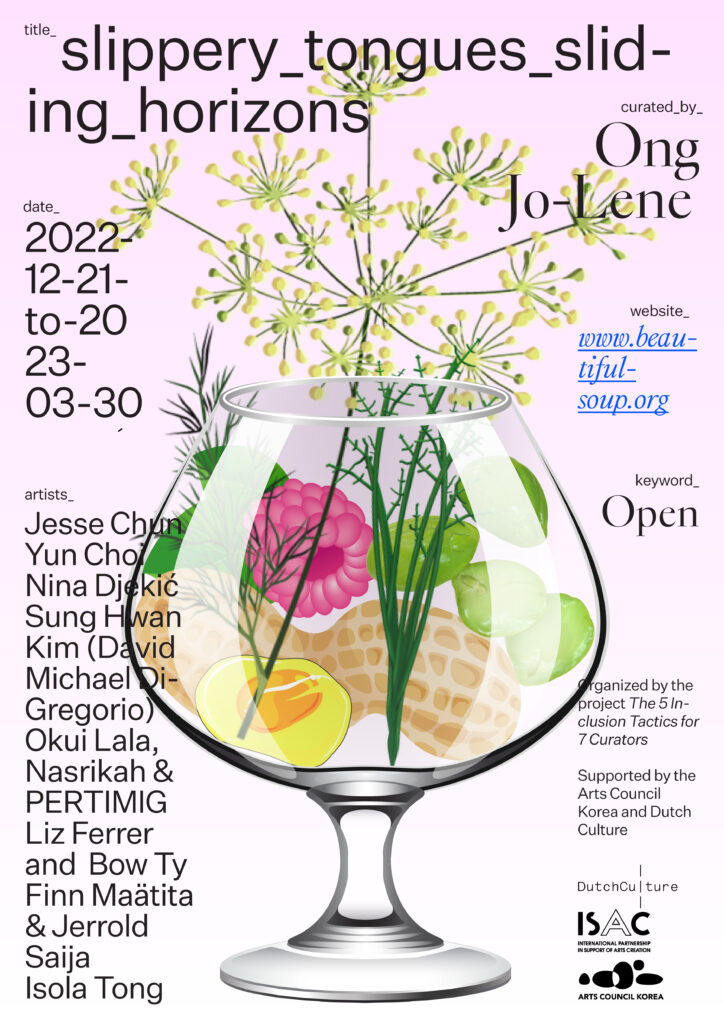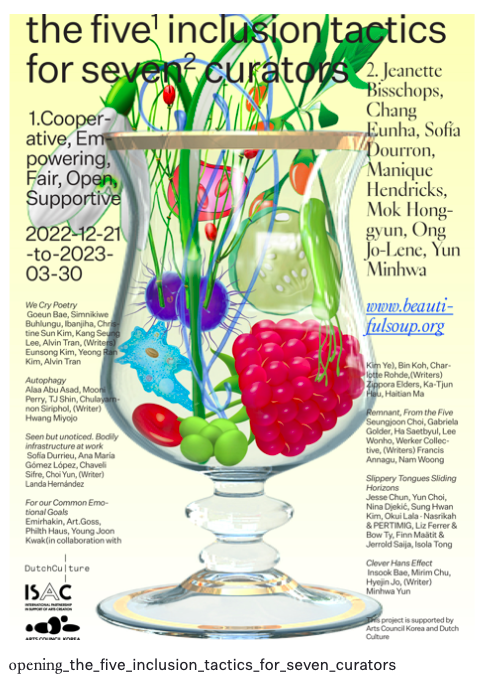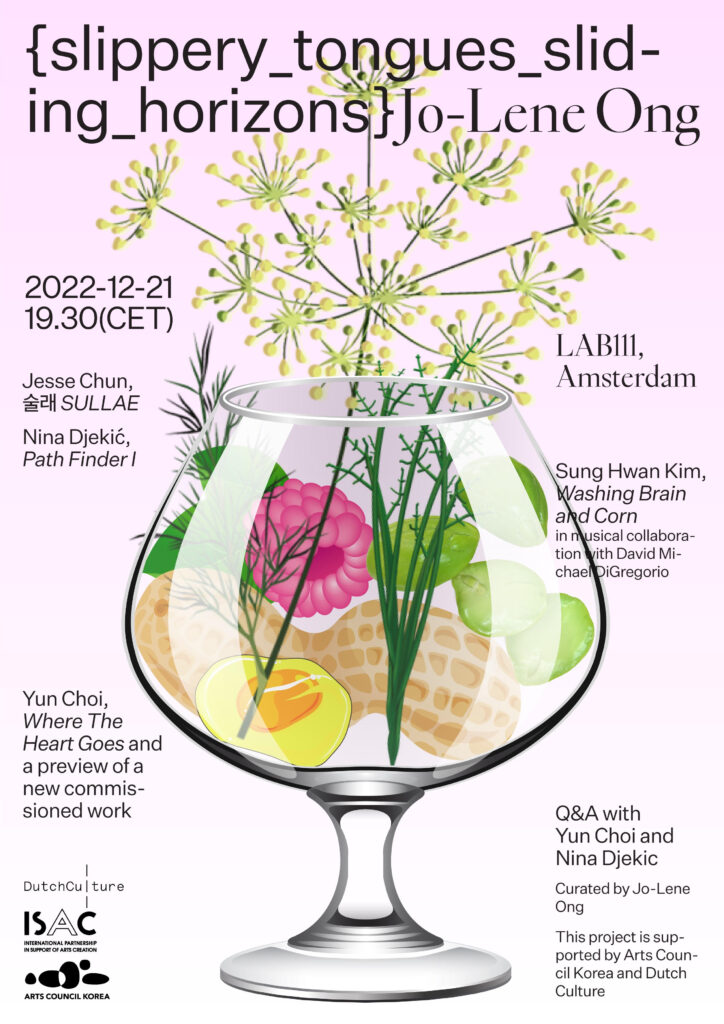part of 5 Inclusion Tactics for 7 Curators
at beautifulsoup.org / De Appel, Amsterdam / LAB111, Amsterdam

An exhibition on the experiences of navigating multiple languages and existing between fixed categories. Bringing together works that perform a poetry of inclusion—gestures of opening up singular narratives and attending to porous boundaries—by Sung Hwan Kim (in musical collaboration with David Michael DiGregorio), Liz Ferrer & Bow Ty (Niña), Jesse Chun, Nina Djekić, Isola Tong, Okui Lala, Nasrikah, & PERTIMIG, along with new commissions from Yun Choi and Finn Maätita & Jerrold Saija.
These experiences common for migrant, diaspora, and peripheral communities, create embodied liminal knowledge articulating a way of relating to the world that alter the borders and categories previously structured by western-modern knowledge. Speaking against western universalism, Slippery Tongues Sliding Horizons re-articulates concepts of ‘language’, ‘knowledge’, ‘traditions’, and ‘technology’ in our own terms and re-imagines shared horizons betwixt and beyond South Korea, the United States, Maluku, Malaysia, Indonesia, the Philippines, and the Netherlands.
Marginality: who names? whose fringes? An else an elsewhere that not merely lies outside the centre but radically striates it.— Trinh T. Minh Ha

South Korean independent curator Honggyun Mok developed an online project called 5 Inclusion Tactics for 7 Curators for the 2021-2022 Korea-Netherlands Cooperation Program. The project was primarily hosted by online lab for independent curators www.beautifulsoup.org and features seven curators whose projects are often situated in Korea or Netherlands. Mok asked each curator to choose one of the five keywords (tactics) – cooperative, empowering, fair, open, supportive. Her invitation prompted me to think about how “inclusion” manifests in both the “front and back end” of the exhibitions, programs, and research I work on.
As a Malaysian of Hokkien Chinese heritage who grew up around the energies of Southeast Asia, a region straddling the historic maritime trade route connecting the Arab peninsula, Indian subcontinent, China, and Europe, it was not perchance but inevitable that my curatorial practice connected with keyword ‘open’. Contested and malleable, Southeast Asia is a highly heterogenous region in terms of religion, ethnicity, culture, language, politics, and geography. This lack of a unifying characteristic or narrative makes it hard to be culturally legible outside of the region. The desire (and need) to be legible was not something that I experienced until I relocated to Amsterdam. Here, code-switching, translating, explaining the differences and shared roots of Bahasa Indonesia, Bahasa Malaysia, and Tagalog, questioning how I should say that I am Malaysian but not Malay… became an everyday thing. Very quickly, the desire for legibility fatigues and starts to oscillate with the right to invoke opacity. This is a condition shared by those with bi-cultural, diasporic, and immigrant backgrounds particularly those with racialised identities. At this juncture, we could turn to identity as modality—the pre-modern way of living closely with flows of sea in maritime Southeast Asia has fostered a vocabulary open to syncretism, hybridity, and constant renewals. This mode of relating to the world where we can and should belong to each other can be sensed in the Malay term “tanah-air” Akin to homeland but connecting with notions of both land (“tanah”) and water (“air”), it suggests a more fluid and elemental notion of belonging and unbelonging.
Resonant with this linguistic sign is a musical composition by Isang Yun, Five Pieces for Piano (1958) that serves as a motif for curatorial director Honggyun Mok in developing Five Inclusion Tactics for Seven Curators. Isang Yun was a Korean-German composer who not synthesised musical characteristics of East Asia and Europe (formal, structural, textural, rhythmic, and pitch organisational factors) but also drew from broader philosophical concepts such as Buddhist philosophy and European avant-garde movement¹. By densely unifying the materials, they become borderless and indiscernible. It is with these orientations, around land-water and polyphonic music, that I extended invitations to contribute works and insights that form and inform this project.
